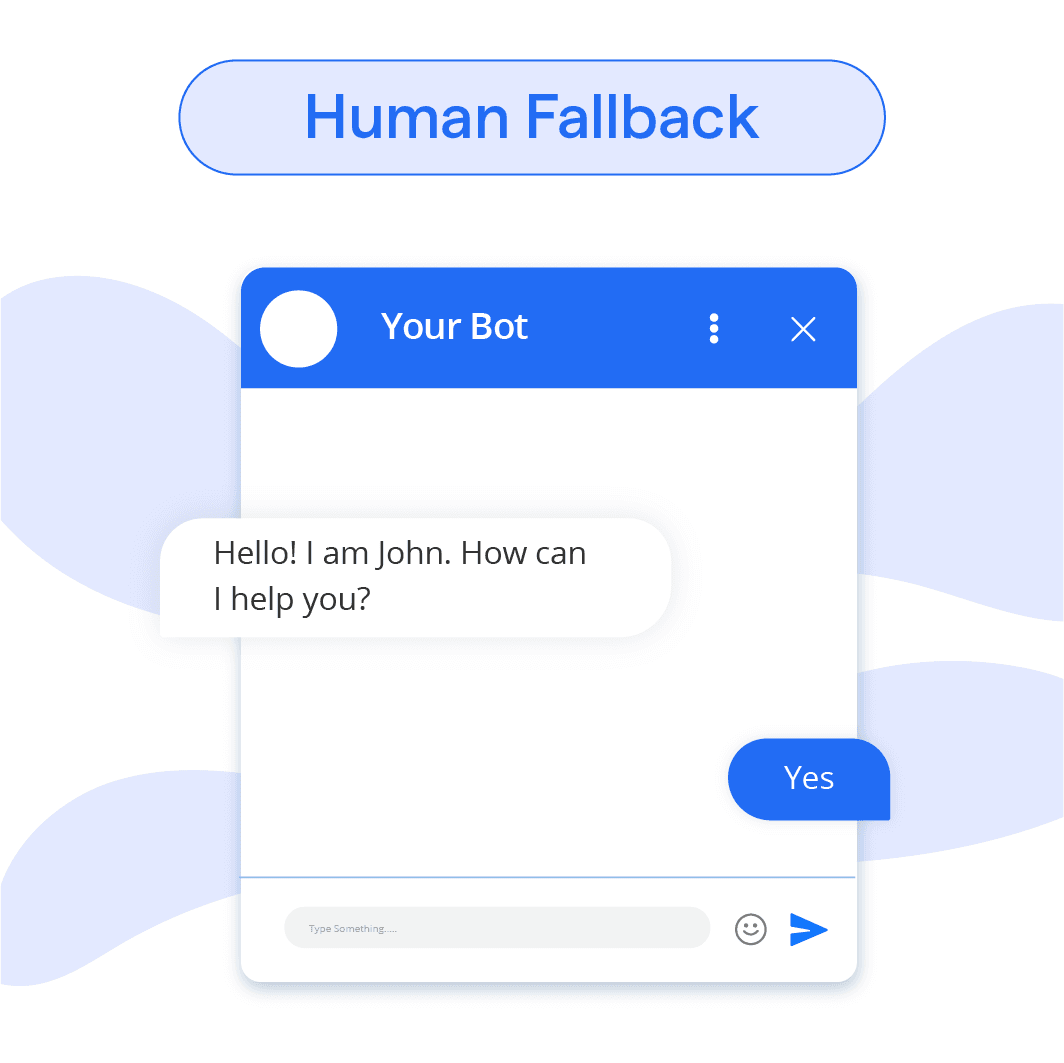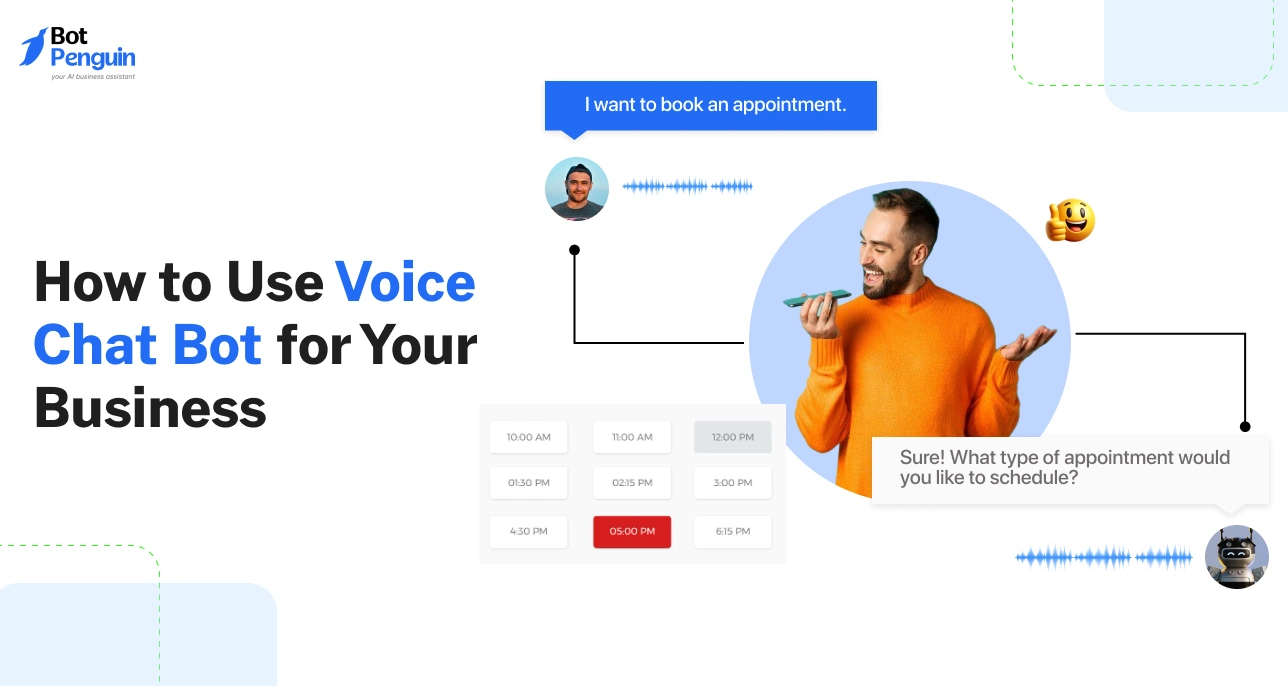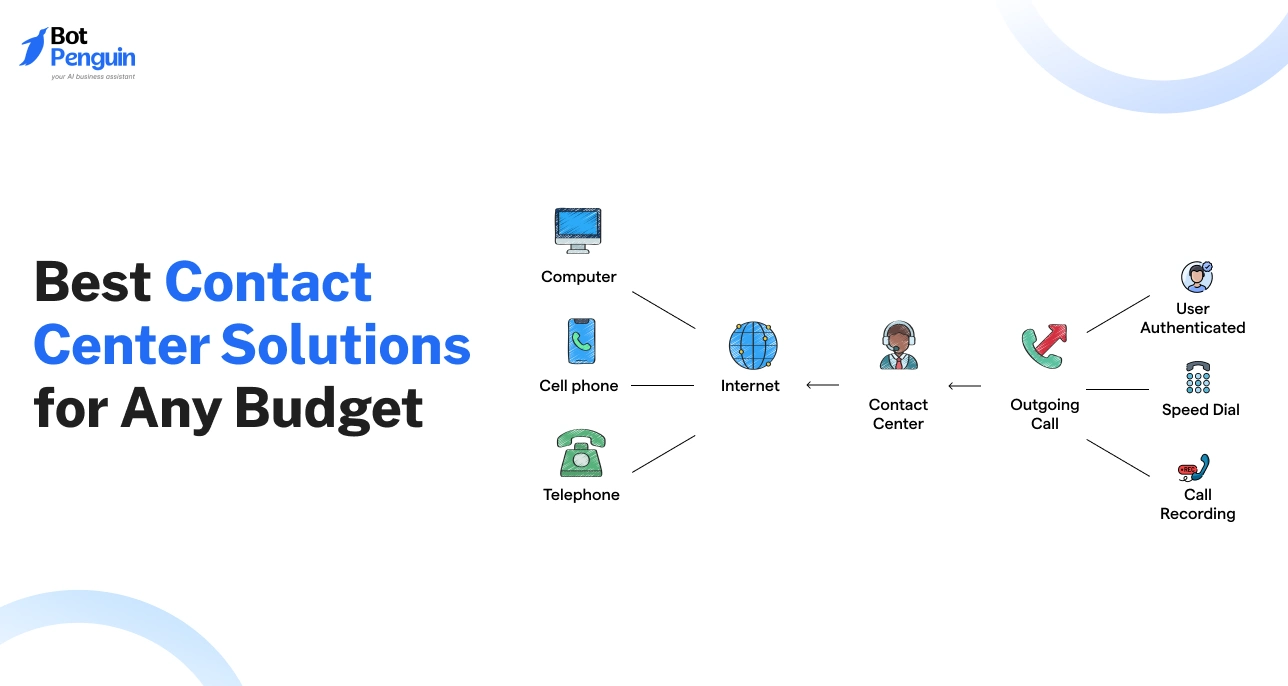What is Human Fallback?
Human Fallback refers to the practice of involving human agents in customer support interactions when chatbots or automated systems are unable to handle a particular request or provide satisfactory assistance. It serves as a backup option to ensure customer queries and issues are addressed effectively.
It involves transferring the conversation from a chatbot or automated system to a human agent who possesses the necessary expertise and knowledge to handle complex or unique customer inquiries. This transfer typically occurs when the chatbot reaches its limitations or when a customer specifically requests human assistance.
Why do we need Human Fallback?
Understanding Complex Queries
Sometimes, our automated friends (like chatbots) get a bit puzzled. We humans are great at asking questions that require a certain finesse and understanding of context. Having a human to fall back on ensures that even the most complex or uniquely phrased queries don’t go unanswered. Human minds can piece together the context and offer a tailor-made solution.
Adding a Personal Touch
Ah, the human touch! There's something special about interacting with a fellow human being. It feels more personal and warm. In situations where empathy and emotions are crucial, the human touch can make all the difference. Humans can share experiences, laugh, and sometimes even cry together. Robots haven’t quite mastered that yet!
Continuous Learning for AI
When the AI gets stumped and a human steps in, it’s like a teaching moment. The AI can learn from the human responses and gradually improve. This ongoing learning helps in training the AI to be more effective in the future. It’s like having an ever-evolving buddy who keeps getting smarter!
Ensuring Data Privacy
Privacy is precious. Sometimes, queries might contain sensitive information that you’d rather not share with an AI. Humans can be more discerning when it comes to handling sensitive data. They can make judgment calls that respect your privacy and ensure the information is handled with care.
Suggested Reading:Human Handover
Flexibility in Problem-Solving
Humans are incredibly adaptable. They can think outside the box and provide solutions that an AI might not even consider. This flexibility allows for more innovative and effective solutions. When you have a human to fall back on, you're tapping into a wellspring of creativity and adaptability that machines are still catching up to.
When to implement Human Fallback?
When to Doubt the AI
Sometimes AI just doesn't cut it! Although artificial intelligence can be incredibly smart, there are occasions when it might give you a puzzled virtual look. Complex queries or those requiring human intuition are often best handled by a real person.
During Sensitive Topics
Let's face it: AI lacks the human touch. When customers need to discuss sensitive topics such as mental health or personal issues, having a real person to talk to is irreplaceable. It’s all about making people feel heard and cared for, and sometimes only a human can do that!
For Elevated Creativity
AIs are like well-trained parrots; they can mimic but not truly create. So when your project requires that extra pinch of creativity or out-of-the-box thinking, it’s time to call in the humans. They’ll add the spice that makes everything nice!
When the Stakes are High
Imagine handling an angry customer or negotiating an important deal. The stakes are high, and one wrong word can turn things sour. In such nail-biting scenarios, human fallback is essential. Humans can understand the nuances and emotions involved, and that's pure gold!
To Learn and Adapt
Now, let’s not be too hard on AI; it’s still learning! When the AI faces new situations, having a human step in and handle the case can be invaluable. The human can later feed their experience back into the system, helping the AI to learn and become even smarter for the next round. Teamwork makes the dream work!
Limitations of Human Fallback
Response Time
One limitation of human fallback is the response time. With automated systems, customers are used to instant responses. However, humans can’t always be as quick. Waiting for a human to answer queries can sometimes lead to frustration, especially if someone's in a rush.
Cost Efficiency
Automated systems usually cost less in the long run compared to human support. Hiring, training, and paying salaries can be expensive. While personal human touch is fantastic, sometimes it’s not the most budget-friendly option, especially for small businesses.
Availability and Scalability
Your friendly neighborhood human has to sleep sometimes! Human support isn’t always available 24/7. Also, if there’s a sudden influx of queries, it’s not easy to just conjure up more human agents. On the other hand, chatbots and automated systems can be easily scaled.
Error Prone
Humans are amazing, but let’s face it, they’re not perfect. Sometimes even the best of us make mistakes or misunderstand something. While an automated system isn't infallible, it’s often more consistent in providing the same level of service.
Language Barriers
Ah, the beauty of human languages! But it can also be a limitation. If customers speak different languages, it might be tricky for human support to communicate effectively. In contrast, automated systems can often translate languages in real-time.
So, while the human touch is warm and wonderful, there are some limitations that need to be considered. But hey, combining automation with human fallback might just be the magical combo!
How can Chatbots Work Hand in Hand With Human Fallback?
Establishing the First Line of Contact
Chatbots can act as the initial touchpoint for customers, handling basic queries and requests. By doing this, chatbots free up human representatives to focus on more complex issues. Plus, they're available round the clock!
Smooth Transition to Human Support
When a chatbot encounters a question or problem it can’t handle, it's crucial to have a seamless transition to a human representative. By transferring the chat history and context, the human agent can pick up right where the chatbot left off.
Continuous Learning and Improvement
Chatbots can keep learning from the interactions handled by human agents. By analyzing these conversations, the chatbot’s responses and capabilities can be improved over time. This creates a feedback loop where chatbots and humans help each other get better at serving customers.
Collaborative Problem Solving
Sometimes, two heads are better than one! Chatbots can be used in conjunction with human agents in real-time. For example, while the human agent is communicating with the customer, the chatbot can suggest responses or provide information to help resolve the issue faster.
Customer Satisfaction and Feedback
Chatbots and human agents should work towards a common goal: customer satisfaction. After resolving an issue, the chatbot can ask for feedback. This data can then be used to further improve both the chatbot's and human agent's performance.
Best Practices for Chatbots and Human Fallback
Set Clear Expectations
It's a good idea for your chatbot to make it clear from the get-go that it's, well, a bot! Users will be more forgiving of its limitations if they know it’s not human. Also, let them know that if things get a bit too complex, a human buddy can step in to save the day.
Keep Conversations Smooth and Natural
The chatbot should be designed with a natural language processing (NLP) capability so that it understands human-like conversations.
Monitor and Learn
Monitoring conversations and tracking where the chatbot might be struggling is super important. Analyzing this data helps you train your bot to be better and know when to tag in a human for support. It’s all about teamwork!
Seamlessly Transition to Human Support
When the bot hands over the conversation to a human agent, make sure that the transition is smooth and that the agent knows the history of the conversation. Think of it as passing the baton in a relay race.
Collect Feedback and Keep Improving
After the chat is wrapped up, ask users for their two cents on how the chatbot and human support did. This feedback helps in making improvements, and who doesn't love improvements.
Frequently Asked Questions
What is human fallback?
Human fallback is a feature in AI systems, such as chatbots, that transfers a conversation to a human agent when the AI cannot adequately handle or understand user requests.
Why is human fallback important?
Human fallback ensures a seamless customer experience, providing timely and accurate assistance even when AI systems face limitations or encounter complex queries.
How does human fallback work?
When the AI system detects a situation it cannot handle, it triggers a handoff to a human agent, who takes over the conversation and assists the user.
Can human fallback be customized?
Yes, human fallback can be customized to suit specific business needs, such as setting thresholds for AI confidence levels or defining triggers for human intervention.
Does human fallback improve AI performance?
Human fallback helps improve AI performance over time by providing valuable training data, enabling the system to learn from human agents' responses and actions.



